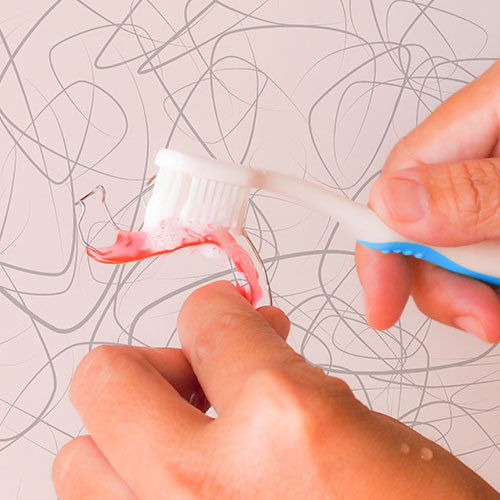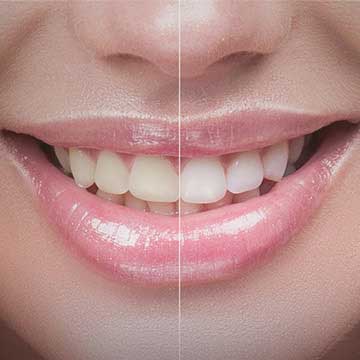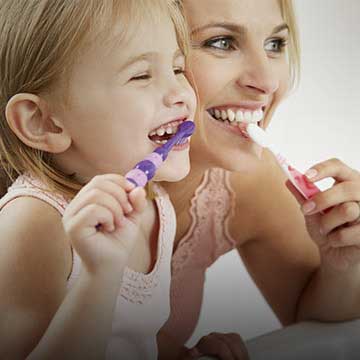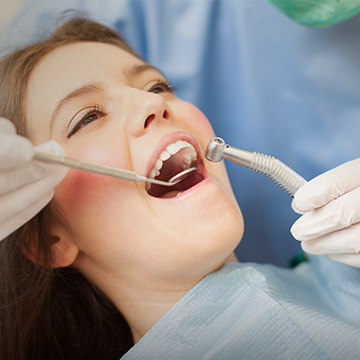Keeping your retainer or invisalign aligners clean is essential for maintaining good oral health.
The Relationship Between Clean Orthodontic Appliances and Good Oral Health
Food particles, bacteria, plaque, and other debris builds up on our teeth, gums, and tongue over the course of the day. To help ensure that your teeth and gums remain healthy, you should be cleaning your orthodontic appliances such as Invisalign aligners and retainers regularly and thoroughly.
Even if you are brushing your teeth twice per day and flossing at least once per day you could be leaving yourself vulnerable to tooth decay, gum disease, and infection if you are not keeping your orthodontic appliance clean.
How to Clean Your Retainer
Brush Your Retainer Twice Per Day

You should be cleaning your retainer every time you brush your teeth, which means that you should be giving it a thorough once over at least twice per day with a soft-bristled toothbrush. However, you should never brush your retainer with toothpaste. Toothpaste is too abrasive to use on retainers and can scratch them. Make sure to pay particular attention to any small nooks or crannies.
Retainers are easier to clean when they are moist since this helps ensure that plaque and food particles don’t have a chance to harden. You should clean your retainer as soon as you remove it from your mouth.
If you are having trouble cleaning your retainer thoroughly speak to your dentist. They may be able to offer suggestions or recommendations.
You should also be soaking your retainer at least once per day, or at the very least at least once per week. Soaking is not a replacement for brushing your retainer.
Soak Your Retainer Daily
You should soak your retainer it in warm water mixed with either denture cleaner or use a foam cleanser like Polident fresh cleanse. Always make sure to give your retainer a good rinse with clean water before returning it to your mouth.
Make sure you don’t soak your retainer for too long as this can corrode the metal wires and clips. Only soak your retainer for about as long as it takes you to brush your teeth. If you retainer has no metal wires you can soak it overnight.
Clean Your Retainer Case
You should clean your retainer case at least once per day. This ensures that any food particles or other debris that has collected in the container doesn’t transfer to your retainer.
Caring For Your Retainer
You should never soak your retainer in hot water or clean it in the dishwasher. High temperatures can cause your retainer to warp, changing how it fits. This, in turn, can affect its ability to straighten your teeth.
You should never let your retainer dry out, as this can also cause it to warp. If your retainer is not in your mouth, you should let it soak in a cup of distilled water or water mixed with baking soda or denture cleaner.
If you have any specific questions about how to properly care for, clean, or maintain your retainer speak to your dentist or orthodontist.
How to Clean Your Aligners
Invisalign aligners, like retainers, need to be cleaned regularly to avoid a build-up of bacteria, food particles, plaque, and other debris.
Keeping Your Aligners Clean
You should never eat or drink anything besides water while wearing your aligners. This will make it easier for you to clean your aligners, and minimize contact between food and your aligners.
Brush Your Teeth
You should brush your teeth after every meal and snack. This will ensure that your teeth are free of plaque, food particles, and other debris that could become trapped between your teeth and your aligners.
Cleaning Your Aligners
One great way to remember to clean your aligners is to add it to your twice daily at-home oral hygiene routine. Before you brush your teeth, you should take out your aligners and give them a rinse with cool, clean water. You should also give your aligners a light brushing with your toothbrush to keep them fresh and clean.
For best results, you should be wearing your aligners for twenty to twenty two hours per day. When you are not wearing your aligners, you should stow them in the case provided by your dentist. Never wrap your aligners in paper towel or kleenex as they can be mistaken for trash and discarded. If you have any specific questions about how to properly care for, clean, or maintain your Invisalign aligners speak to your dentist or orthodontist.









